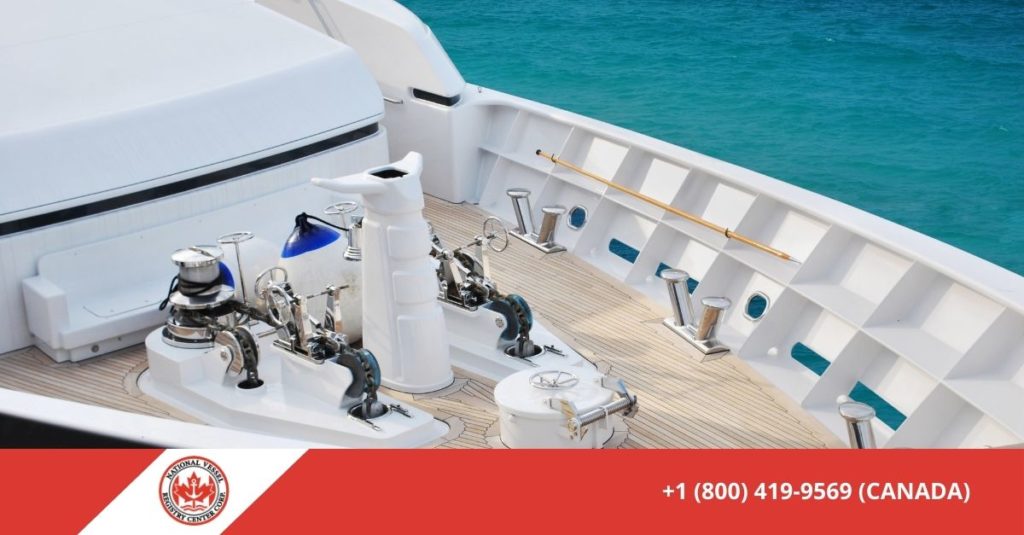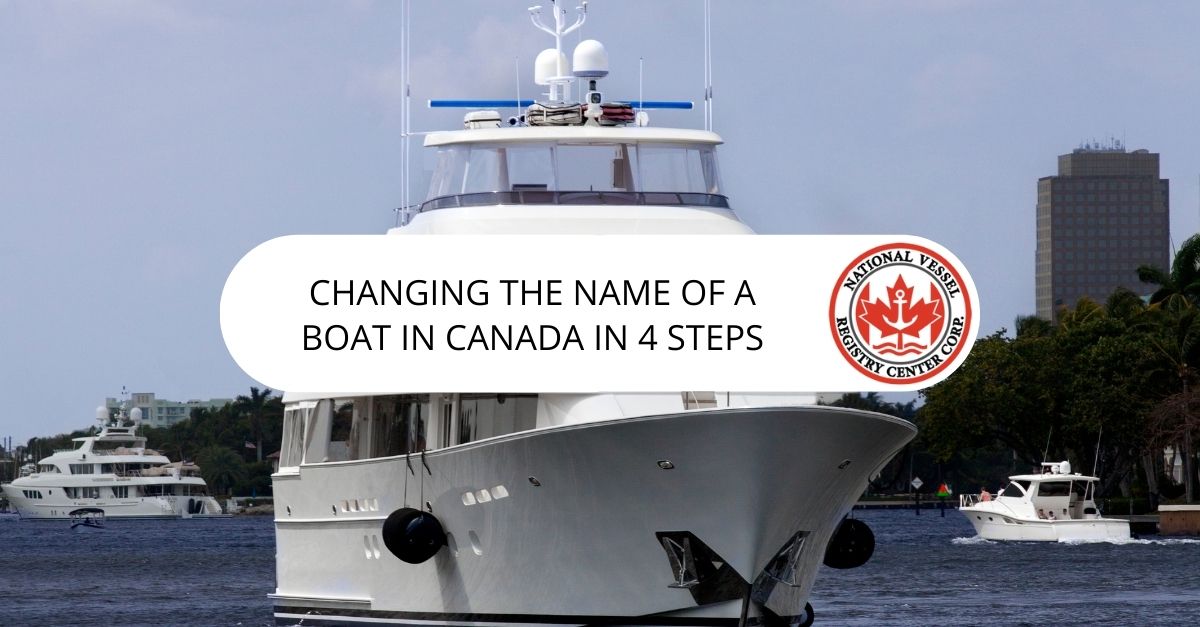If you are superstitious, renaming your boat will involve more than just a couple of steps, as sea lore has always stressed that changing the name of a boat is bad luck. Besides legally changing your boat’s name, you also have to remove all remnants of the former name and hold de-naming and renaming ceremonies.
For the less superstitious boaters who wish to stay compliant, Transport Canada offers instructions on changing the name of a boat in Canada, outlined in 3 of the 4 steps below.
1. Select a Unique Name
When changing the name of a boat, your new name must be different from other registered boats for safety reasons. It should be easy to pronounce and understand. This is especially helpful when the name is used for radio contact or communications.

Tips for Choosing the Boat’s New Name
Also, when changing the name of a boat, Transport Canada advises that you use a name that is distinct that is not trademarked. Make sure the name does not sound like a distress signal used for marine emergencies.
You also cannot use marine acronyms, such as “SV” *(sailing vessel) or “FV” (fishing vessel).
You can use an article, such as “the” or “la” or “le”. However, if a name, such as “Happy Mariner” is already taken, adding an article will not make it different. So, for naming purposes, The Happy Mariner and Happy Mariner are considered the same.
An authorization must be submitted with your application for a name change if you submit the name of a Canadian town or city or famous Canadian resident.
Superstitions and Naming
Because it is considered bad luck to change the name of a boat, you can always choose a boat name that will offset this type of the influence. Some sailors suggest changing the name so it contains 7 letters, as doing so brings good luck
Also, making sure the name includes the letter “A” three times is good luck as is giving a boat a feminine name. Doing so is thought to bring the assurance of protection and fortune.
Naturally, if you follow one of these suggestions, you still have to make sure the boat’s name is unique and easy to say.
2. Fill Out Form 13 to Apply for a Name Change
Fill out the application for the name change. Form 13, or the Application for Change of Name of Vessel and/or Transfer of Port Registry, is available through Transport Canada The application will ask that you provide three names for your pleasure craft.
Providing three names, when changing the name of a boat, is necessary if one or more of the chosen names are taken. So, make sure you include the names you like in order of preference, with the first selection being your favorite name.
3. Submit the Application and Pay the Name Change Fee
Usually, it is faster and more convenient to submit the name change application and pay the fee online. While the form can be submitted in the mail, submitting it online will result in faster service. The fee for the name change is $250.00. You can mail in the form or fax or email it as well. Payment can be made online or by check or phone.
4. Remove All Traces of the Former Name
After you receive approval for using the boat’s new name, you need to get rid of any trace of the former name from your boat. You should also remove the name from all the boat’s records, including maintenance receipts and logbooks.
Again, it is important to rid the boat of any trace of the former name. This includes getting rid of the boat’s old identity from keyrings, sails, or the hull – remove the lettering, decals – anything (the former logo) and everything that features the prior name. Some boat owners get rid of the name of the former boat owner from the boat’s records as well.
Removing Vinyl Graphics and Decals
To get rid of vinyl graphics or decals that are associated with the old boat’s name, use a hairdryer. Start at one end to soften the glue and start peeling until the graphic is removed. Blot turpentine on the residue to complete the removal process.
Hold Traditional Denaming and Renaming Ceremonies
According to the site, Discover Boating, you should host de-naming and renaming ceremonies, complete with a gathering of friends and champagne. Boating traditions hold that you need to follow these practices to prevent from experiencing Poseidon’s wrath. In Greek mythology, Poseidon was the god of seas and waters.
Tradition also dictates that you cannot bring anything on the vessel with the boat’s new name until you conduct the renaming ceremony.
According to legend, changing the name of a boat is bad luck unless you follow tradition and remove the former name and everything connected with its use.
Where to Place the New Boat’s Name
Once you completely remove any evidence of the former name, place the name of your boat and hailing port on the hull’s exterior where it can be easily seen. Some boat owners also add the name and hailing port at the back, on a visible spot of the stern.
Get Started on Changing Your Vessel’s Name Now
If your vessel features a name that was personally meaningful for the previous owner but does not relate to you, contact the Canadian Vessel Registry to make changing the name of your boat uncomplicated and fast. You can also call the third-party provider, which works through Transport Canada, at 1 (800) 419-9569.

